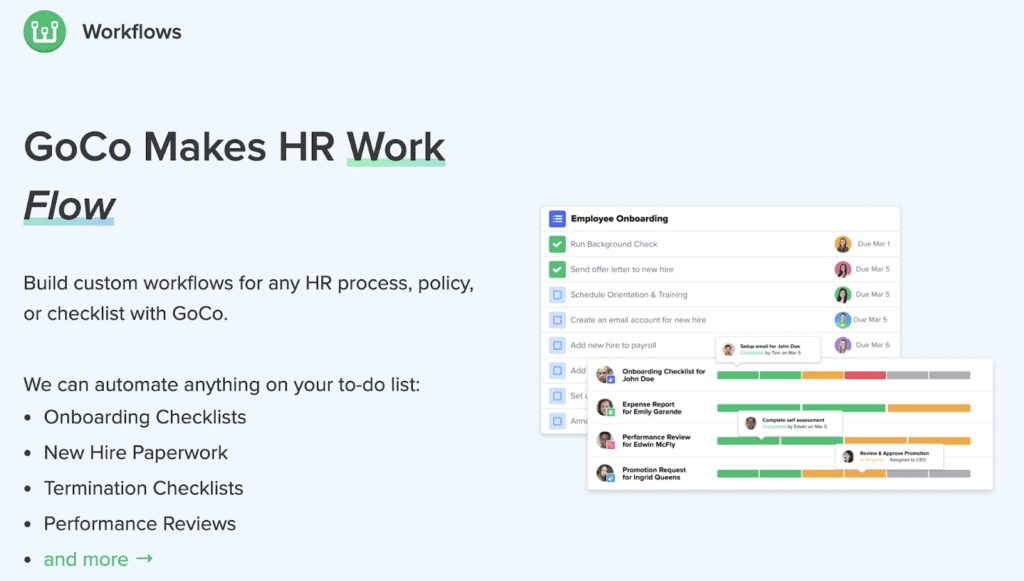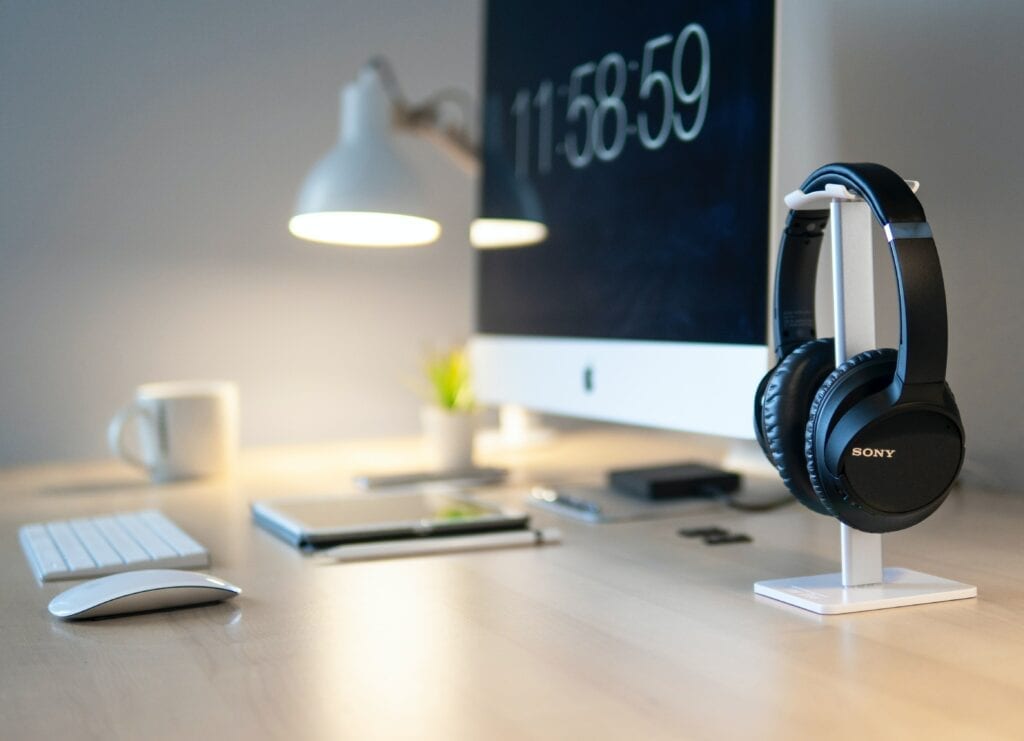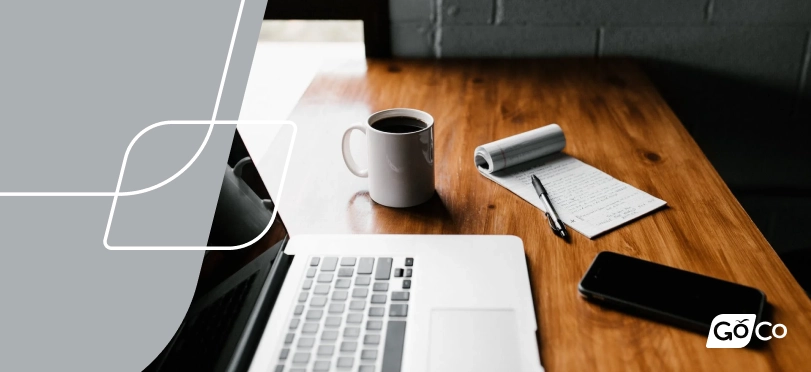16 Tips to Improve Productivity While Working Remotely
Learn how you can fight distractions and avoid procrastination with these 16 actionable tips to increase your productivity when working from home.
by CJ Cowan - March 3rd, 2023
Working from home has many advantages. We can translate hours a week commuting into hours actually working. It also has some disadvantages. There is a lot less commuting but a lot more distractions. Probably a dozen things within arm's reach could sabotage your workflow.
GoCo is a hybrid company, and we work daily with remote teams to improve employee engagement. We know what works and what doesn't. In this post, we'll outline how to be more productive in a world of distractions and avoid procrastination.
Download the 2023 HR Compliance Calendar
Download Calendar
1. Resist the Urge to Multitask!
Juggling more than one task at a time may seem savvy, but it is a losing game. You're not multiplying your time, but you're subtracting it. Multitasking, especially if it's the general model of your workflow, can take a brutal toll on your productivity.
 According to the American Psychological Association, human executive control processes have two distinct stages. One is Goal Shifting, stopping a task and starting another. The other is Rule Activation, turning off one set of rules and starting another. Both of these stages enable people, unconsciously, to switch between tasks.
According to the American Psychological Association, human executive control processes have two distinct stages. One is Goal Shifting, stopping a task and starting another. The other is Rule Activation, turning off one set of rules and starting another. Both of these stages enable people, unconsciously, to switch between tasks.
This switching takes time and mental energy. Switching between tasks may take only a few seconds, but they can quickly aggregate if constant.
Multitasking intuitively seems like the best way to get more things done in a shorter amount of time. Yet, science tells us that the work may take more time and be less quality. Mental blocks created from floating among different can take up 40% of your productive time.
2. Stick to a Plan
This is the ideal time management method. It is tempting when you don't have to commute in the mornings to sleep in and wake up when you want to.it is vital to have set sleep schedules and patterns of daily life to ensure a productive, working life.
 Scheduling will prevent a lot of stress and anxiety from sapping your reserves. You will thank yourself for allowing your mental energy to do things rather than worrying about what to do.
Scheduling will prevent a lot of stress and anxiety from sapping your reserves. You will thank yourself for allowing your mental energy to do things rather than worrying about what to do.
Procrastination is the thief of time, and bad scheduling is like an unlocked door.
3. Remember to Eat Breakfast!
Your parents were right about many things, and they were right about this one too. Eating a well-rounded breakfast full of healthy proteins and fats is vital for thinking and creating. Don't skip breakfast, and avoid sugary cereals.
When remote working, saying "I can eat whenever" is a losing game. If you are poking around the kitchen when you should be working, you waste time. And time is not a renewable resource.
4. Use the Pomodoro Technique
Studies have shown that workers who intersperse numerous short breaks into their workday rather than pushing through work hours with minimal breaks are more productive.
It is better to procrastinate on purpose than by accident. This study illustrated that the human brain is suited to roughly an hour of continuous high activity and deep concentration. After an hour, there are diminishing returns in productivity.
You have probably heard of the Pomodoro Technique. Influencers love it. Thought leaders swear by it.
But how does the Pomodoro Technique work? Francesco Cirillo developed the Pomodoro Technique to overcome distractions and procrastination as a student.
He found a tomato-shaped timer (Pomodoro is Italian for tomato) and told himself to work until the timer rang. The original Pomodoro technique involved setting a timer for 25 minutes to focus on a single task until the timer goes off, then you take a five-minute break.
One session is one Pomodoro. After four Pomodoros, you should have a more extended, unplugged break before starting work again. Proponents tout these small breaks as improving concentration and helping them to stay focused.
What Are the Benefits Of the Pomodoro Technique?
Increasing Time Consciousness
It will make you better aware of time. It will prove how much you can accomplish when distraction-free and committed. It will expose the limits of your ability and your productivity. Due to the Planning Fallacy, we underestimate the time to complete tasks despite previous failures. This will be harder if you hold yourself accountable for these work sprints.
Avoiding Distractions
Rewarding yourself with small breaks will accomplish more work with less willpower. Powering through long stretches of work takes mental energy away from the task. You can work against yourself, or you can work with yourself.
Little Goals; Massive Growth
Setting these tiny challenges for yourself and meeting those challenges will imbue you with a sense of accomplishment. This feeling of accomplishment will inspire you to set more and grander goals. Over time this will aggregate to a happier, more successful life.
5. Add A Splash Of Colour
Color psychology is an excellent set of tools used by interior designers to boost productivity in the office. These techniques can hack your mood and mindset in your home office.
Different colors have varying effects on your behavior and mood.
Blue is often used in office space because it boosts productivity, efficiency, and focus. Blue would be an excellent color for a backsplash in a home office.
Yellow is the color for artists and innovators. Yellow aids creativity and energy but can also flame feelings of frustration. Yellow would be the perfect color for an accent, decoration, or paperweight.
6. Take Up Journaling
Writing down what went wrong and what went right is a fantastic way to improve your performance without onsite feedback from managers and colleagues. It is also a healthy way to externalize stressors and process them.
Sounds easy? If it's done right, it's tough. Journaling is about keeping yourself accountable.
Rigorously and mercilessly assessing whether you're surfing towards your goals or treading water. Having a written log of all your wins and losses is very confronting.
Write a list of things you want to accomplish daily or weekly, then reflect on how well you move towards those accomplishments.
Self-discipline shouldn't be cruel, nor should it be too kind.
7. Have houseplants in your home office
Not only do they brighten up a room, but they also brighten you up.
Research shows that indoor plants have many therapeutic and physiological benefits, such as relieving stress and anxiety. Plants boost creativity and productivity in the workplace. That's on top of improving air quality.
In 2016, Researchers found that Amazon employees in India and the United States had more job satisfaction and stronger ties to the organization if they worked in an office with natural elements.
And they're pretty!
8. Avoid Email Pitfalls
Refreshing your email and staring at quiet slack channels is not a productive use of anyone's time. Yet, it is crucial when working remotely to respond quickly to messages.
Email Surfing is a guilt-free form of procrastination that we're all guilty of that we should shake off.
There is a balance between poking around empty inboxes constantly and ghosting your colleagues and clients. Set regular intervals to check on and respond thoughtfully to outstanding messages throughout your day.
If you're expected to respond promptly, once an hour is best. If you work mainly independently, then twice daily might be better to use your time.
9. Write Down Your Three Most Important Tasks (MITs)
Start each morning by writing down your Most Important Tasks (MITS), not in a few words, but in complete sentences describing what you want to achieve and why.
Be precise. Don't write things like "research competitors." This is vague and can allow you to do a quick google search, write down some brands, and check it off your list. Instead, write, "Research three competitors and list their founders, outline their value proposal and any notable product offerings."
This is harder and more time-intensive, but you will feel a much better feeling of accomplishment than you would be deluding yourself.
Think critically about the difference between 'urgent' and 'important.' Urgent and important are not always synonymous. Remember, 'urgent' is often someone else's priority, but 'important' is yours!
10. Use Anti-Distraction Tools and Website Blockers
Working from home means we can work at our own pace, in our own way. We can listen to music or podcasts while we code, write, or brainstorm for our company's benefit. Distributed and remote workers have proven that this trust and freedom pays dividends for employees and employers.
But there can be too much of a good thing. Searching for a fire playlist on Spotify can quickly become a texting bout or a mini TikTok binge.
When deadlines are tight, use anti-distraction tools like website blockers to avoid this. You can block productivity pits like YouTube and Twitter for custom times when you want to dig deep into a project.
What about my phone? Try letting it charge in a different room, putting it on airplane mode, or shutting it off entirely.
11. Practice Task Batching
Schedule similar tasks into batches to be completed at the same time. Use this hack to avoid the context-switching costs inherent in multitasking. The mental effort of jumping between very different tasks, like writing code and responding to emails, can sap your productivity and detract from the quality of your work.
Wide-ranging tasks require a wide array of tools and resources. Popping around different windows, tabs, and software is mentally taxing.
A real-world example would be responding to emails and messages and writing marketing content. These tasks all involve communicating in complete sentences to inform or convince. Hence, it is easier to transition between these tasks mentally.
It would be more demanding and less beneficial to group communicative tasks with quantitative ones like accounting, as the gap between these tasks is much larger.
Human beings are imperfect, but we can hack our imperfections to our benefit! You got this!
12. Find Your Chronotype
Finding your chronotype can help you better understand the optimal pattern of your life and work. A chronotype is an individual's circadian rhythm - an internal clock built into their biology. It influences when a person sleeps and when their concentration and productivity are at their finest.
Have you heard the terms night owl and early bird? There is a science to explain that every person has peak productivity times. Synchronize your work and sleep to bring out the best in you.
The Four Common Chronotypes
Bear
Typical sleep cycle. You wake up with the sun and sleep at night. You're most productive in the morning and experience a dip in the late afternoon.
Wolf
Not a morning person. Midday risers. Most productive in the afternoon. They find a second wind in the evening. They can do a lot at night whenever one else has called it a day.
Lion
Rise and grind! Lions love to get up before dawn and are on top of things until Noon. They have quiet evenings and hit the hay well before midnight.
Dolphin
If you have trouble falling asleep or maintaining a sleep schedule, you may be a Dolphin. They're productive midday, 10 am to 2 pm.
13. Automate What You Can
It seems that work nowadays consists of a million tasks, systems to utilize, and no time to organize the mess. Finding ways to automate tedious tasks and clerical work eliminates the extra headache while allowing you more time and mental capacity to focus on what's important.
 This is where a system that can outline forms and workflows is critical. Check out this article on the GoCo Workflows Feature! The integration of this feature has been crucial to our successful transition to remote work. It can handle any HR task, employee surveys and inputs, and more!
This is where a system that can outline forms and workflows is critical. Check out this article on the GoCo Workflows Feature! The integration of this feature has been crucial to our successful transition to remote work. It can handle any HR task, employee surveys and inputs, and more!
14. Get Some Fresh Air While You Work
Whether sitting in an office or at home, spending 8+ hours fenced in can be a real downer. Try stepping out onto your patio, balcony, or an outdoor coffee place for a fresh change of scenery!
 This is a great way to switch up your work-from-home routine while being able to take in the great outdoors! All you need is a cool beverage and a stable WiFi connection!
This is a great way to switch up your work-from-home routine while being able to take in the great outdoors! All you need is a cool beverage and a stable WiFi connection!
15. Dress Up, Even Though You're at Home
This old trick has been around forever, but it really does work. Somehow, dressing up as if you're going into the office and feeling good about your appearance sets the tone for a productive day.
This is probably one of the more challenging suggestions. It's so tempting to lay in bed in your sweatpants and try to work from there. But getting ready and wearing an office-worthy outfit will boost your proficiency while working from home! You wouldn't want that look to go to waste, would you?
16. Keep Your Workstation Tidy
A messy desk leads to a cluttered mind. It gets hard to focus when your workspace is cluttered with other things that either aren't relevant or could end up being distracting. Keeping your workspace clean and clutter-free is a great way to set the foundation for a productive day.
 Try decluttering and making preparations for your workday the night before so you can jump right in and optimize your time during the workday! This small step can save time and make you feel better while charging through your daily work agenda!
Try decluttering and making preparations for your workday the night before so you can jump right in and optimize your time during the workday! This small step can save time and make you feel better while charging through your daily work agenda!
Final Thoughts
Working from home has its pros and cons. The most significant con is arguably staying motivated and keeping productivity up when you could be doing a million other things. Try implementing some of these suggestions into your work-from-home experience and see how helpful they are! They've helped us keep going, and we hope they work just as well for you!
Recommended Posts
22 Employee Engagement Ideas That Remote Workers Love
Blog Articles
How to Improve Employee Experience with eNPS [+template]
Blog Articles
Search...
Product
GoCo
Resources
Articles
eBooks
Webinars
Customer Stories







